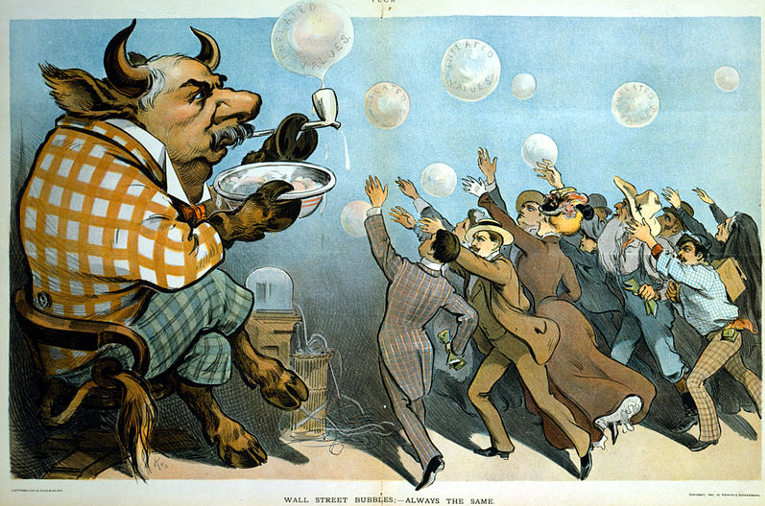Dark Age America: Climate Change, Cultural Collapse and the Hard Future Ahead
245 pp. New Society Publishers – Sept. 2016. $18.95.

John Michael Greer acknowledges that his aim with Dark Age America is an ambitious one. The book is his attempt to sketch out the likely course of industrial society over the next 500 years, with a particular emphasis on the United States. Greer’s core premise is that our present civilization, like the late Roman Empire and the classic Lowland Maya before it (to name two examples), has overshot its resource base and is now in terminal decline. Thus, it’s inevitable that in coming centuries, America, along with the world’s other developed nations, will descend into a dark age as harsh as any the human race has ever known.
What makes Greer confident in his ability to extrapolate out half a millennium is the wealth of information we now have about the fates of previous civilizations. Greer is a historian, and one of his chief influences is the work of historical theorists like Oswald Spengler and Arnold Toynbee, who have demonstrated the existence of cycles in history. Civilizations, these theorists have shown, move through a predictable cycle of emergence, growth, maturity, decline and death. What’s more, the latter stages of this progression are the most predictable. While civilizations tend to be distinct from one another early on in their development, they become nearly indistinguishable as they fall. As Greer eloquently puts it, “[C]ompare one post-collapse society to another—the societies of post-Roman Europe, let’s say, with those of post-Mycenean Greece—and it can be hard to believe that dark age societies so similar could have emerged out of the wreckage of civilizations so different.”
Greer’s portrait of dark age America begins with the legacy of extreme environmental degradation we’re leaving our descendants. Climate change, in particular, threatens to destroy enormous swaths of human habitat throughout North America. Based on the available paleoclimate data, Greer predicts that the western half of America will eventually come to resemble the Sahara Desert, while the Gulf states will become increasingly tropical and the Gulf coast will retreat ever further inland. Most of Florida will become an uninhabitable saltwater swamp. Regions that are currently centers of agricultural production will fail to produce sufficient quantities of food due to topsoil loss and unpredictable rainfall. And, as seawater floods the ruins of hastily abandoned chemical facilities, what few fish remain in waters off North American coasts will in many places become too toxic to eat.
Judging from the population declines seen in previous dark ages, Greer expects the present world population to fall by as much as 95 percent. However, he stresses that this won’t, contrary to popular imagination, take the form of a cataclysmic die-off. Rather, it will be a gradual change that people will come to accept as the new normal. Industrial nations will find themselves in a situation in which their death rates persistently exceed their birth rates by small margins—say one to three percent per annum—and while this will add up over time, people will adjust. “That’s the way population declines happen in history,” explains Greer, adding, “Vast catastrophes need not apply.”
In addition to depopulation, two other factors that will shape the demographics of dark age America are mass migrations and the formation of new ethnic groups. Those migrating will be fleeing desertifying regions like the southern Great Plains and the Great Basin, as well as areas that are already desert today—and are inhabitable now only because of present-day technology—such as the Sonoran Desert. They’ll also be leaving flooded coastal cities and poisoned lands. Greer sees the erasure of ethnic divisions occurring in stages, beginning with a period of heightened strife among various groups as the industrial economy moves through its death cycle and economic inequities worsen. Beyond this phase, a chaotic melting pot will ensue as the institutions that maintain ethnic divisions fall away. The final stage will be one in which totally new ethnicities arise.
The politics of the coming dark age will be characterized by the disintegration of America’s current social hierarchies. These hierarchies, argues Greer, are like any other form of social capital in that they have maintenance costs that must be met. Their maintenance costs consist of the minimum standard of living that the elites must provide to persuade the masses to continue going along with the existing order. As a civilization’s resource base shrinks, it becomes increasingly difficult for the ruling class to provide members of the laboring class with a living wage. Eventually an uprising becomes inevitable, and the elites face a choice of going into exile or being murdered by bloodthirsty mobs.
This grisly cycle is, in Greer’s estimation, already under way in America. So far, the elites have responded to the growing unrest with a mixture of repression and complacency. On the repressive end, Greer points to the excessive militarization of local police, together with the rampant civil rights violations being perpetrated by both mainstream political parties. At the same time, the elites seem to have been lulled into a belief that nothing could ever unseat them from their privileged positions. “They’re wrong,” admonishes Greer, “and at this point it’s probably a safe bet that a great many of them will die because of that mistake.”
Greer believes that as political leaders, members of the scientific community and other public figures grow more and more out of touch with the general population, people will increasingly gravitate toward strongmen in much the same way that the Huns revered the fearsome warlord Attila. In the process, society will come to adopt a new, grittier worldview that does a better job of explaining people’s everyday experience than does the cheery narrative of perpetual progress.
The key takeaway from Greer’s chapter on economic collapse is that economic growth in late industrial America has passed the point of diminishing returns and entered the zone of negative returns. In making this case, Greer refers to a 2013 study sponsored by the United Nations Environmental Program. This study concluded that the world’s top 20 industries would become unprofitable if they had to pay for the ecological harm they cause, rather than foisting it off onto the public as they do now. This damage may not appear on businesses’ balance sheets, but it still impacts the economy. Greer cites the example of fracking firms that would rather dump their wastewater into the environment than safely dispose of it. Though this decision saves the companies money, it puts a drag on the economy elsewhere in the form of increased public health costs from disease clusters that spring up around dumping sites. Eventually, negative externalities like these add up until they come to debilitate an economy. Greer believes that this is where we’re at now with today’s industrial economy.
But externalities are only half the story when it comes to explaining what ails the modern growth economy. The other half has to do with the depletion of oil and other nonrenewable resources. We’ve now reached a point where many finite resources are in irreversible decline, and Greer sees this as spelling the demise of industrialization. To support this conclusion, he cites a well-established principle of human ecology called White’s law, which says that a society’s level of development depends on how much per capita energy is available to it. Greer’s term for the process of decline that sets in when a civilization lacks the energy it needs to sustain itself is catabolic collapse. The word catabolic refers to the way in which such a society begins feeding on (i.e., catabolizing) itself, just as an organism deprived of essential nutrients destroys itself by breaking down its own body tissues for energy.
A chapter trenchantly titled “The Suicide of Science” delves into the ways in which Greer sees the scientific profession sowing the seeds of its own undoing. These include the profiteering machinations of the medical industry, the demonstrable lies that scientific experts regularly tell the public, the verbal abuse that outspoken atheists within the scientific community hurl at people of faith and the toxic legacy that industrialism is leaving for future generations. Even without these considerable downsides to modern-day science, scientific research would still have a tough go of it, since the resources on which it depends will be desperately needed for necessities like food production and defense against barbarians. In light of all this, predicts Greer, it will be a no-brainer for communities to decide to stop funding science altogether. Greer also sees laboratories and other scientific facilities being vandalized and burned down for the betrayal of public trust that they will have come to embody.
The book’s section on responses to the predicaments of early dark age America focuses on individualized, localized actions. This is in keeping with the conventional wisdom among collapse thinkers that large-scale institutions will be of no use, since it’s their vast scale that caused the crises in the first place. Greer’s specific recommendations all speak to the need to proactively ratchet down our energy and resource consumption so as to be prepared for the lean future ahead. Greer also encourages readers to learn all they can about the lived experience of Americans during other periods of crisis in our history, both by reading books and by talking with elderly relatives about their personal survival strategies.
As those familiar with Greer’s previous work are well aware, he’s now written numerous other books that cover much the same territory as this one does, but from differing angles. Given this thematic dovetailing, it’s impossible not to marvel at how fresh each new entry feels. Nothing ever seems recycled in the least. Rather, each new book astounds anew with its erudition, literary panache and ideative exuberance.
The Retro Future: Looking to the Past to Reinvent the Future
227 pp. New Society Publishers – Sept. 2017. $19.99.
 These days, the word progress has come to mean deterioration far more often than improvement. This is the central tenet of The Retro Future, and it’s something that Greer believes we all sense at some level but aren’t yet willing to admit. We can’t help noticing that each new software upgrade is more riddled with bugs and less user-friendly than the one before, or that consumer products across the board grow shoddier, less satisfactory and more dangerous every year. Yet our faith in progress prevents us from coming to terms with these facts. It’s this faith that The Retro Future squarely confronts.
These days, the word progress has come to mean deterioration far more often than improvement. This is the central tenet of The Retro Future, and it’s something that Greer believes we all sense at some level but aren’t yet willing to admit. We can’t help noticing that each new software upgrade is more riddled with bugs and less user-friendly than the one before, or that consumer products across the board grow shoddier, less satisfactory and more dangerous every year. Yet our faith in progress prevents us from coming to terms with these facts. It’s this faith that The Retro Future squarely confronts.
The book proposes that the world’s industrialized nations deliberately reverse course technologically as a matter of public policy. Greer reasons that this transition is bound to happen eventually anyway, as we lose access to the money, energy and other resources necessary to sustain our current level of technology. Thus, it would behoove us to get ahead of the curve by bringing about the shift ourselves while we can still do so gracefully. The U.S. government could spur this change through simple revisions to the U.S. tax code, as well as laws that would limit our public infrastructure to technology from previous eras (say the 1950s or the 1880s). This would drastically decrease the nation’s dependence on dwindling energy supplies, since ‘50s technology, for example, was far less energy-intensive than is today’s. It would also put scores of unemployed people back to work, as the technology of the ‘50s relied far more heavily on manual labor than does today’s.
The tax code revisions that Greer has in mind would, he believes, go a long way toward bringing about these changes. It’s currently more cost-effective for businesses to automate than to hire people, because automation comes with significant tax breaks, while human capital entails additional taxes in the form of Social Security, unemployment insurance, workers compensation and the like. Meanwhile, as companies automate more and more, society bears the costs of caring for displaced workers through taxpayer-funded assistance, while the environment shoulders the burden of rising pollution from the machines. The new tax that Greer envisions would transfer the responsibility for these latter costs back to the companies. With humans increasingly replacing machines on assembly lines, the wage-earning class would return to something like its former prosperity, and nature would rebound as well.
A glimpse into how this might work out in practice can be gleaned by reading Greer’s 2016 novel Retrotopia (reviewed by me here). Set five decades from now in a nation known as the Lakeland Republic—which is located in what is currently the American Upper Midwest—Retrotopia paints a picture of what life could be like if citizens were allowed to decide democratically what level of infrastructure they were willing to support with their taxes. This approach has yielded fantastic dividends for the Republic. At a time when most other nations within the former contiguous United States are economic basket cases because of their continuing commitment to growth and innovation, the Republic is flourishing due to its decision to pursue “retrovation.”
If you’re thinking that this strategy amounts to depriving people of access to technology, you’re wrong. Greer emphasizes that the type of public policy he has in mind would apply only to publicly funded infrastructure; individual citizens and privately held companies would be free to own and use more modern technologies, as long as they were able to pay for them out of their own pockets.
The biggest barrier to this sort of change is cultural; it has to do with what Greer calls “the heresy of technological choice.” Our culture worships progress so absolutely that people harbor a deep-seated superstition against picking and choosing which technologies to use or not use. People are expected to embrace the entire gamut of modern-day technology, or else reject it just as completely. Those who don’t fall in line with this expectation—by, for instance, refusing to own a TV or cell phone, while still making use of the Internet and electric lighting—face ridicule. Fortunately, the taboo against technological choice will eventually, Greer thinks, fall away as we begin to run short on the resources that make the industrial era’s signature technologies widely available.
For me, the most fascinating part of this book is one exploring the concept of “orphan technologies,” or those that outlive the civilizations that birthed them. In the course of this discussion, Greer speculates that today’s hydroelectric dams could well become an orphan technology in much the same way that the ancient Roman aqueducts did during the post-Roman dark ages. If this proves to be the case, the denizens of dark age America will, like the inhabitants of early medieval Europe before them who inherited the aqueducts, be the recipients of a great windfall. Despite lacking the resources or knowledge needed to construct it themselves, they will nonetheless be benefitting from a fully functional advanced technology left over from our time.
I have one minor criticism of both Dark Age America and The Retro Future, and it’s one I’ve leveled at previous books by Greer. Greer’s book material comes from his prolific output of blog posts, and his method is to write on a particular theme for an extended period, then weave the resulting posts into one longer work. Though he does this masterfully overall, there are sometimes points in the finished books where the transitions between blog posts could be smoother. For instance, in Dark Age America there’s a spot where he expresses the same idea twice, using similar wording each time, within the space of a couple of pages. Before the shorter pieces became a book, a degree of repetition was appropriate, as not every reader of a given post would have read the one before. When translated into book form, however, this is problematic. Greer’s books also occasionally neglect to define terms introduced in his blog. While his regular blog readers will have encountered these terms enough times to know their meaning, this doubtless isn’t the case for everyone who reads his books.
But the editing lapses described above are a faux pas of mere aesthetics, not of content. What really matter are the visionary perspectives on the future of humanity that Greer’s books offer in spades.






